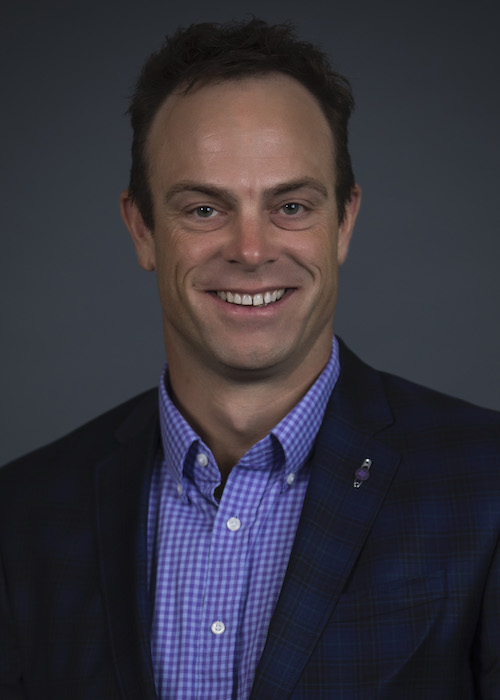By Katie Bahr
Industry leaders like Vanderbilt University Medical Center know that creating business efficiencies in the healthcare setting helps their institutions thrive while serving their mission of helping patients. That’s why VUMC approached the Master of Management in Health Care (MMHC) program for help with creating a strategy to grow its surgical practice 20 percent in the next five years.
The surgical practice was selected as one of the MMHC cohort’s capstone projects. From January through the end of the program in the fall, students work in teams of 4-5 people on projects for healthcare organizations, from ideation to implementation. The capstone gives students the opportunity to apply their classroom knowledge to the real world, while healthcare organizations benefit from student’s perspectives and consulting recommendations.
“VUMC needed to know the data at hand and what types of decisions had to be made to get them to their goal,” explained Aaron Hart, senior manager of operations and analytics at VUMC and one of the capstone project’s team members.
The capstone team — Hart, Geoffrey Fleming, Molly Olenick, Victoria Price, and Adrienne Bridges — dove into the project and began putting their newfound business knowledge to use.
The Origins

Aaron Hart
Growing a surgical practice, like growing any business, requires a defined marketing strategy. Although a physician liaison group existed within VUMC’s surgical practice to cultivate referrals, the group was housed under the patient experience arm and took a clinical approach to their work.
“Tracking metrics and clearly defining how to prioritize what type of referral wasn’t something the physician liaison group had a lot of experience in,” Hart said. “Using those tactics to get our arms around the scope of how to meet VUMC’s growth goals was at the heart of the project.”
To take a more strategic approach, the team needed to understand where most of their referrals were coming from and how referrals were being prioritized. These two questions led Hart and the capstone team to target data and benchmarking as their main pivot points.
“Ultimately, whoever is making the decision about what referrals to prioritize is executing their growth strategy,” Hart said. “They needed data about what was working and an internal structure for how to make decisions, so they could direct growth deliberately.”
The Project
The capstone team split into two groups: figuring out data analytics and examining best practices for physician liaison groups. Fleming, a Vanderbilt pediatrics physician, and Hart took on the data. An initial review showed that while the organization gathered copious referral data, it was not being compiled into an actionable format.
“Bringing all the information about where their visits were coming from and statistics on types of procedures into a single source will better equip the liaison team to know who to go see and what to talk about in the community,” Hart said.
Hart and Fleming liaised with Vanderbilt’s enterprise analytics team to develop a dashboard containing information on patient demographics, referrals, procedures, and visit-to-procedure ratios.

Molly Olenick
The benchmarking side of the capstone team included Olenick, an RN at VUMC; Price, a business manager at VUMC; and Bridges, of Excel Consultant Pharmacist Services. Their group modeled physician liaison groups at other organizations and developed booth job descriptions and a strategic overview of department organization, goals, and responsibilities from the director down to liaisons themselves.
“We determined the need to restructure the physician liaison program by adopting a marketing-service approach,” Olenick said. “The proposed recommendations will allow leadership to monitor the program’s effectiveness, targeting specific departments, tracking liaison activities, and trending the outreach program that’s in place.”
The capstone team also recommended that the physician liaison group create a centralized committee to be the decision-making body for the organization. With insights from their data gathered in a single place and clearly defined leadership, the group could target the specific markets and demographics with the highest potential for growth.

Geoffrey Fleming
“We were able to make recommendations that reflected fundamental shifts from business as usual, as well as recommendations that made sense to the organizational leadership,” Fleming said. “We provided a frameshift approach that jibed with the organizational culture and values — always difficult to discern as a consultant.”
Today, Vanderbilt’s physician liaison group has been moved under Vanderbilt’s marketing arm; it’s hiring multiple new liaisons and has a strategic plan, with deliverables reviewed yearly. Hart says he’s impressed to see the changes that the team’s work helped inspire.
“At a place like Vanderbilt, you expect everything to be a well-oiled machine,” he said. “An organization as big as we are, as a leader, it was interesting to see how much room we had to improve every area of business. It’s eye-opening.”